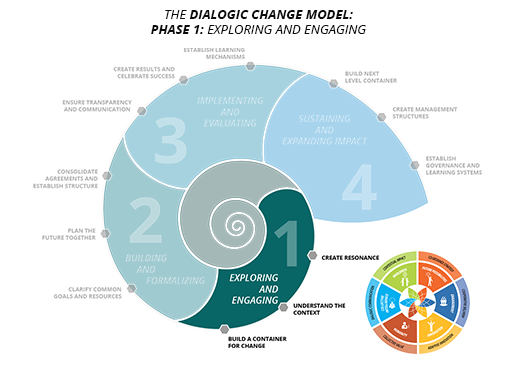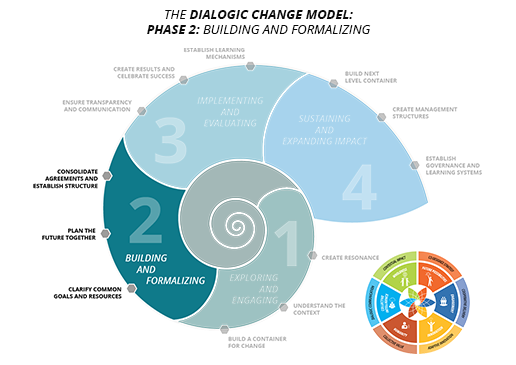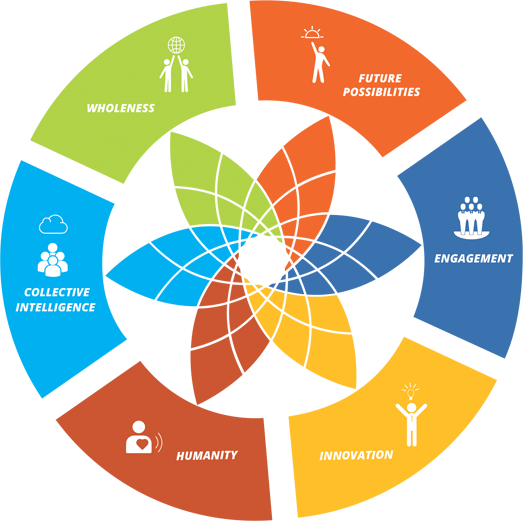The Dialogic Change Model is a practical guide for the structured planning and implementation of collaborative change with multiple stakeholders in four distinct phases. The model is the basis for developing process architectures that support stakeholders to operate as a coherent and well-functioning collaboration ecosystem.



This Report to the Club of Rome 2019 serves as a guidebook for decision-makers, researchers and activists who need to navigate collaborative and transformative change towards sustainable development.

The Collective Leadership Institute has supported more than 40 local, national and international collaborative change projects for SDG implementation towards success. More than 4000 change agents gained process competence through capacity building programs. We began to systematically observe the success factors for collaboration and discovered how the quality of collaboration patterns had an impact on the results. Dysfunctional collaboration patterns such as continuously lingering mistrust, a lack of a sense of ownership, unilateral control and power dynamics, or all talk no action symptoms, always severely compromised results and impact. It turned out that paying attention to building human competencies for collaboration around the Collective Leadership Compass in the four phases of the Dialogic Change Model was the single most important factor for successful change. The application of both methodologies shows the pathway to making collaborative change truly transformative.
Learn more about the Collective Leadership InstitutePhase 1 is focused on raising the energy for collaborative change and dialogue.

Phase 2 is about consolidating the system of stakeholders into a collaboration ecosystem that can deliver.

Phase 3 is about implementing planned activities, ensures joint learning and focuses on tangible results.

Phase 4 is about bringing the collaboration ecosystem to the next level of impact and creating long-term structures for transformative change.


Get your e-guide to applying the Compass to making multi-stakeholder collaboration ecosystems transformative
DOWNLOAD
Reading books can change our lives. Petra Kuenkel ground-breaking book “The Art of Leading Collectively” and the management book “Führen mit Sinn” (in German) are the latest of several insightful publications we offer.

Peter is the Executive Director of DiversAct, an international NGO in Europe. The mission of the organization is to put biodiversity and natural resource management high on the public agenda.
Read More
Andrea is the sustainability manager of a European energy supply company that intends to enter into the renewable energy field, but still runs coal and a few nuclear energy plants.
Read More
Celine is a water engineer and the chair of the inter-ministerial coordination committee for the implementation of the drinking water policy in an African Country.
Read More
Nadeem is leading a complex strategic sustainability initiative between NGOs, development cooperation, the public sector and the private sector.
Read More
Mike is the CEO of medium-size textile company. When he joined the company, sustainability issues were still seen as belonging to the communication department.
Read More